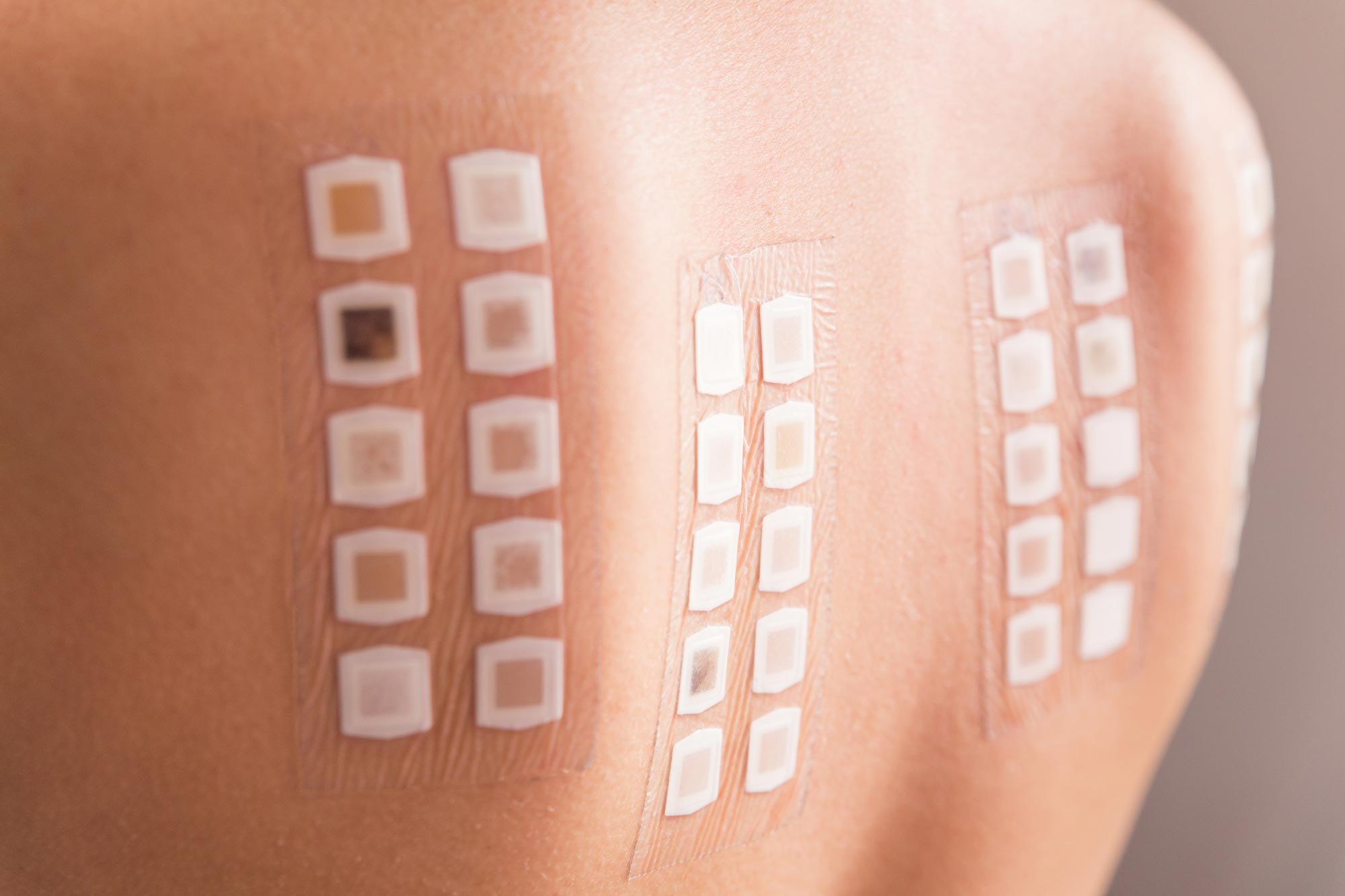
Allergy Patch Testing

Patch testing is a non-invasive diagnostic test used to identify allergens in patients with allergic contact dermatitis. Our office utilizes the North American Standard Series, which is a comprehensive panel that evaluates for 80 of the most common allergens, including dyes, preservatives, metals, fragrances, textiles, topical medications, and resins. Dr. Farhadian was trained to conduct patch testing by Dr. David Cohen, a leader in the field of contact dermatitis.
Frequently Asked Questions
-
Complete patch testing requires three visits. The first visit is usually on a Monday, at which time the allergens are applied to one’s back. The patient returns on Wednesday, at which time the allergens are removed, and an initial reading is performed to identify early reactions. The patient then returns on Friday, at which time the final reading is performed to identify any delayed reactions. At the time of the final reading, our office provides the patient with a “safe product list” of agents (commercially sold shampoos, conditioners, face washes, nail polishes, eye drops, etc.) that do not contain any identified allergens.
-
Showering should be avoided from when the patches are applied to when they are removed, as the test area cannot get wet during this time. Exercise or other activities that promote sweating should also be avoided. Oral immunosuppressants (e.g.: prednisone, cyclosporine, methotrexate, azathioprine) should not be taken during patch testing and for one week prior. Discontinuation of these medications must be done in consultation with your prescribing physician. Cortisone injections should not be performed for one month prior to patch testing. Patch testing should not be performed while pregnant or breast feeding.
-
Patch testing is the gold standard test for the identification of contact skin allergies. “Skin prick” testing and allergy blood testing (serum IgE) are useful when identifying allergens that are ingested or inhaled (e.g.: nuts, ragweed, medications).
